There are moments in the garden that you want to hold on to forever. Times when you just want to press pause before, like revellers heading home from a summer party, all of that colour and joy and beauty disappears.
Drying your own flowers at home is one small but special way to do this, allowing you to create long-lasting arrangements for the home such as dried wreaths, bouquets and even hanging installations that can be re-used and re-worked to give many months of pleasure during the darkest months of winter and early spring.
Unlike their imported equivalents, these home-dried flowers also tick all the right boxes in regards to seasonality, sustainability and being locally sourced. So you can use them knowing that unlike most imports, they won’t have been treated with preservatives or flame retardants or have been spray-painted, bleached or soaked in synthetic dyes, all issues of growing environmental concern when it comes to the commercial dried-flower industry. Instead they’re simply natural beauty in a time capsule, a little part of the joy and colour of your summer garden captured for you to enjoy.
How to go about it? Firstly, bear in mind that not all flowers are equal when it comes to drying. As a general rule of thumb, the bigger and lusher the blooms, the more challenging they will be to dry while those with smaller, finer blooms and/or tougher or naturally papery petals will be easier. For best results, it’s also important to pick your flowers at the right stage of development, which is usually (but not always) when the flowers are almost but not quite fully open and before they’ve started to set seed. Likewise, never pick them on a wet day, just after rainfall, or very early in the morning when their petals are covered in a film of dew, all of which will make it difficult to successfully dry them. Just as for fresh cut flowers, it’s also best not to pick at the hottest part of the day; instead aim for mid-morning.
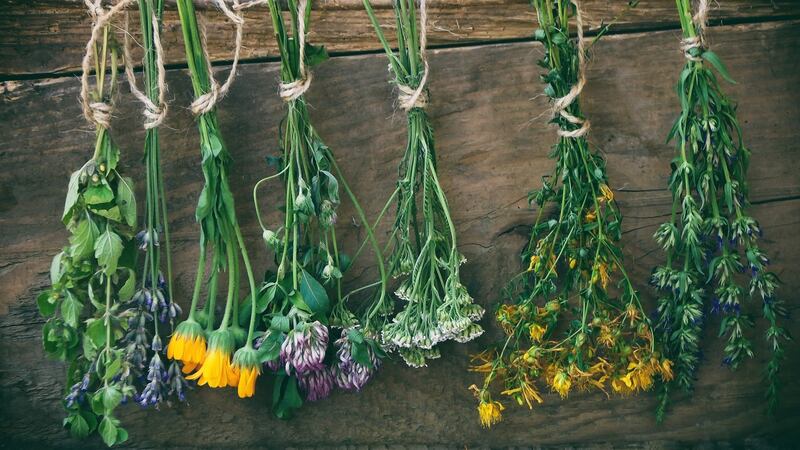
Small bunches
As you pick the individual flower stems, strip away their leaves and then tie the stems into small bunches (these dry much better than large bunches). Bear in mind that different species will dry at different rates depending on the size and type of flower and the thickness of the stem, while some will naturally shrink more than others. For this reason, bunch each species/variety separately. Make sure to use elastic bands to do this as they’ll naturally contract as the stems dry and shrink, keeping each hand-tied bunch properly secured.
For straight stems, hang your flower bunches upside down (this way the stems will dry straight rather than bend or sag) in a warm, dry, dark, well-ventilated space such as an attic, garden shed, stable or airing cupboard for 4-6 weeks. An electric dehumidifier can also be used to speed up the process and ensure good results; just place it a small, dark room near the hanging bunches, which can be strung from hooks, clothes hangers or even from a clothes rack.
Wherever you choose to dry your flowers, make sure to space the bunches apart to allow the air to freely circulate and to keep them away from bright sunshine which will bleach them. If you’re drying a lot of bunches, a good way to maximise the drying space is to string up a mini washing line from which to hang them.

While most flowers are best dried upside-down in this way, others with dangling or trailing flower stems such as some varieties of love-lies-bleeding should instead be dried by placing the stems upright in a vase or a bucket (Amaranthus, harvest when seed has started to set and the flowers feel firm to the touch).
A few other kinds of dried flowers – for example, hydrangeas – can also be dried by placing the fresh stems upright in a vase, shallowly filled with water and then simply leaving the flowers to slowly dry as the water evaporates. In this case, it’s important to pick your hydrangea flowers when they’re quite mature and their petals are starting to subtly change colour and are becoming tougher to the touch (usually from late August onwards).
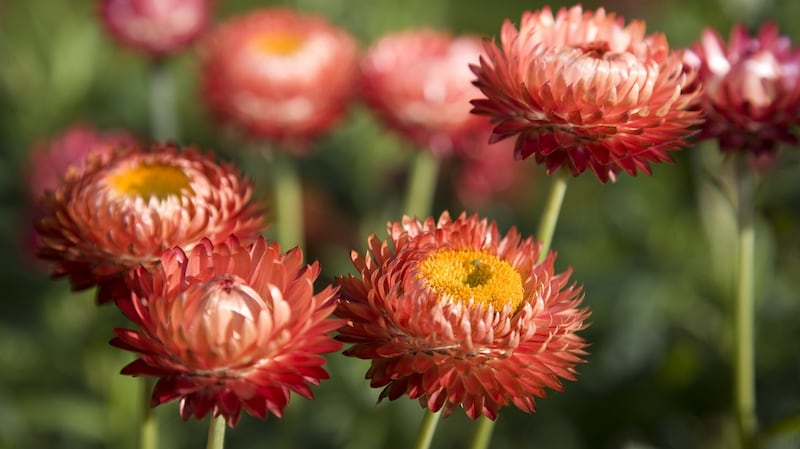
But the upside-down method I’ve outlined above is best for the vast majority of dried flowers including the oh-so-fashionable strawflower (Helichrysum bracteatum/ Bracteantha bracteata), whose starry, papery flowers come in fruity shades of purple, plum, apricot, orange gold, pink and white. Easily raised from seed sown under cover/on a bright windowsill in mid-spring, this fast-growing, sun-loving half-hardy annual makes a great addition to a mixed flower border, growing into a tall, branching plant that starts blooming in July. The flowers should be picked just before they’ve fully opened, ideally when the first two-three outer rings of the flowers’ papery bracts have unfurled.
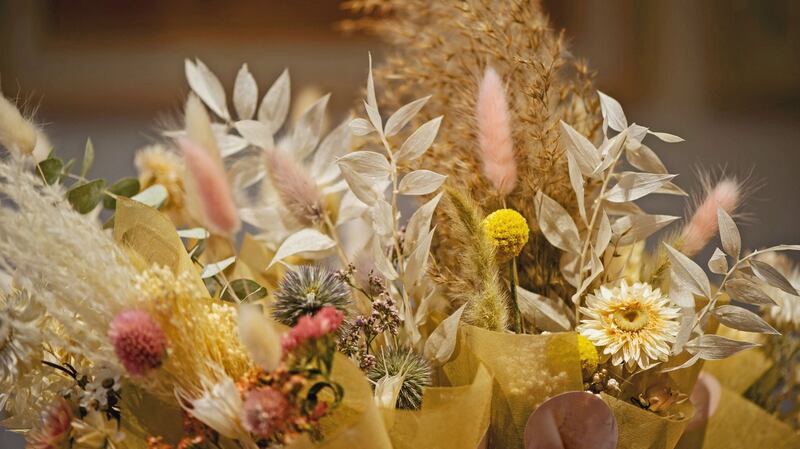
Other flowers for drying
Examples of other ornamental garden species especially suitable for drying in this way include the annual statice (Limonium sinuatum, harvest when almost all the flowers are open); perennial statice (Limonium tataricum, harvest when almost all the flowers are open); the pretty annual known as globe amaranth (Gomphrena globosa, harvest when flowers are fully open), the golden-flowered Craspedia globosa (harvest when the flowers are fully open); annual larkspur (Consolida ajacis, harvest just as all or nearly all the flowers are open), delphinium (as for Larkspur); lavender (Lavandula, harvest just as the flower spikes are about to open), bells of Ireland (Moluccella laevis, harvest when the flower bells have become firm to the touch); helipterum (Rhodanthe chlorocephala, harvest just before the flowers fully open); clary sage (Salvia horminum, harvest when flower tips have coloured up) ); yarrow (Achillea millefolium, harvest just as flowers have fully opened), astrantia (as for achillea) and ornamental thistle (Echinops retro, harvest when the seedheads are firm and still blue).
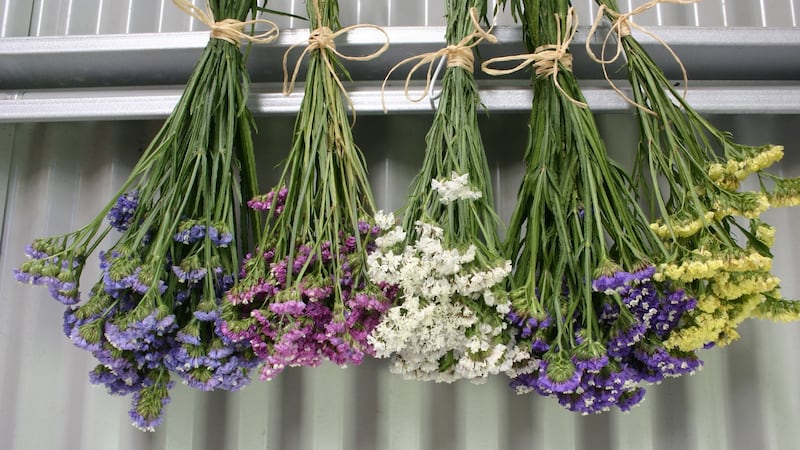
The sculptural flowers and seedbeds of many kinds of ornamental grasses and grains can also be dried in exactly the same way. Examples include pennisetum (Pennisetum villosum, harvest before the seed heads shed pollen); Panicum violaceum (dry in upside-down bunches or upright in a bucket); hare’s tail/ bunny tails (Lagurus ovatus, as for pennisetum), greater quaking grass (Briza maxima, harvest when the seed-heads are turning from green to gold), Miscanthus sinensis, oats and wheat .
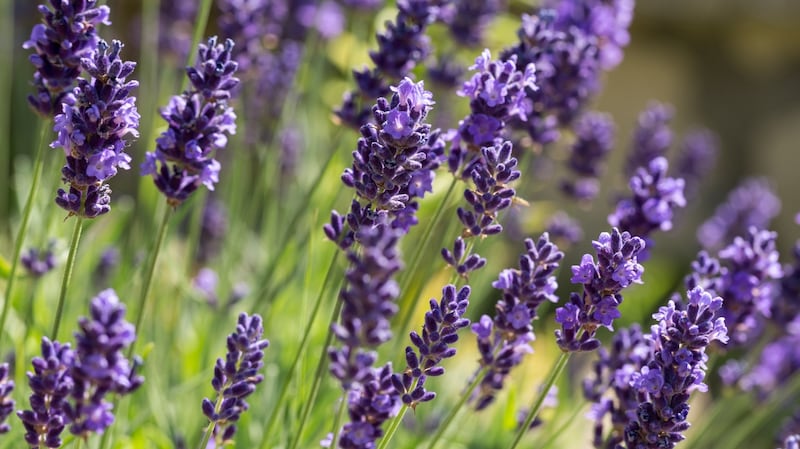
The beautiful ornamental seedheads of opium poppies (Papaver somniferum) can also be dried, as can honesty (Lunaria annua, harvest just when the seedheads have turned from green to silver/brown), the annual known as Love-in-a-mist (Nigella sp, harvest when the seed pods are firm to the touch); many kinds of alliums and Persian cress (Lepidium sativium).
Properly dried flowers, ornamental grasses and seedheads should always feel firm and slightly papery to the touch, at which point they’re ready to use. To keep them looking as fresh as possible, position them away from bright sunshine and occasionally use a hairdryer on a low setting to blow away any dust. If you’re planning on using your dried flowers for a special event such as a wedding, it’s best to gently place them horizontally in a lidded cardboard box (add a few sachets of silica gel if you have them,) and then store this somewhere dry, cool and dark until needed.
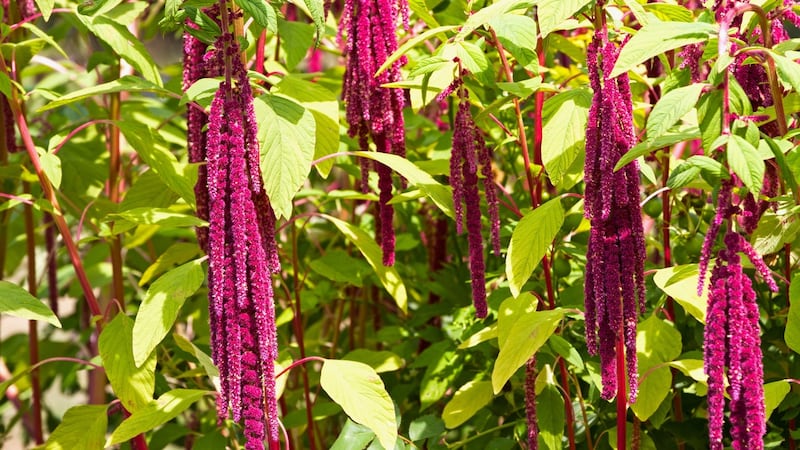
This Week in the Garden
Keep an eye out for self-sown seedlings which can often be seen popping up in borders or gravel paths at this time of year but can quickly become the accidental victims of over-zealous weeding or hoeing if you’re not careful. Mark them with a label to protect them, or gently dig up and pot on any that you’d like to move to a different position in the garden this autumn or to give away to friends or to garden club plant sales. Make sure to keep these freshly potted-on seedlings well-watered and out of direct sunlight until their baby root systems have had a chance to recover.
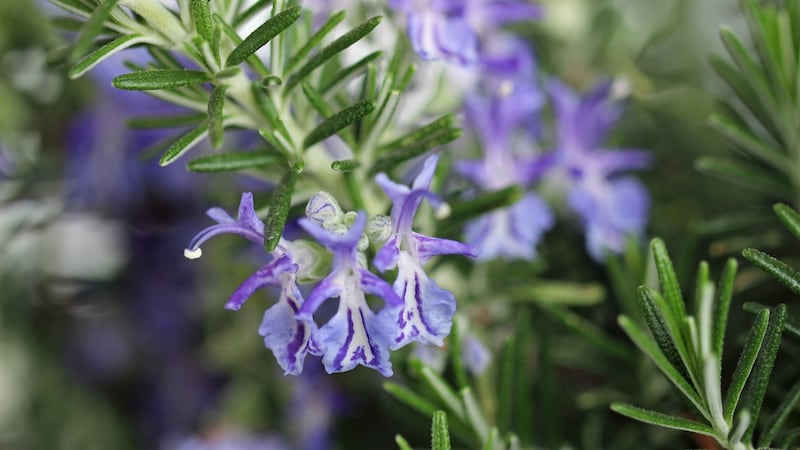
This is a good time of year to take semi-ripe cuttings of many kinds of culinary herbs including sage, bay, rosemary, hyssop and thyme. Use a good-quality seed and cutting compost for this and add plenty of horticultural grit or vermiculite to give a very free-draining mix, which will help with root development. Pots of cuttings should be placed in a warm, sheltered spot but out of direct sunshine and should be kept regularly watered.
Dates For Your Diary
From August 18th- September 5th, A Year's Turning, an open-air textile art exhibition and art trail by the art group Element 15 taking place across the Wicklow gardens of June and Jimi Blake near Blessington. See element15.ie, juneblake.ie and huntingbrook.com.










